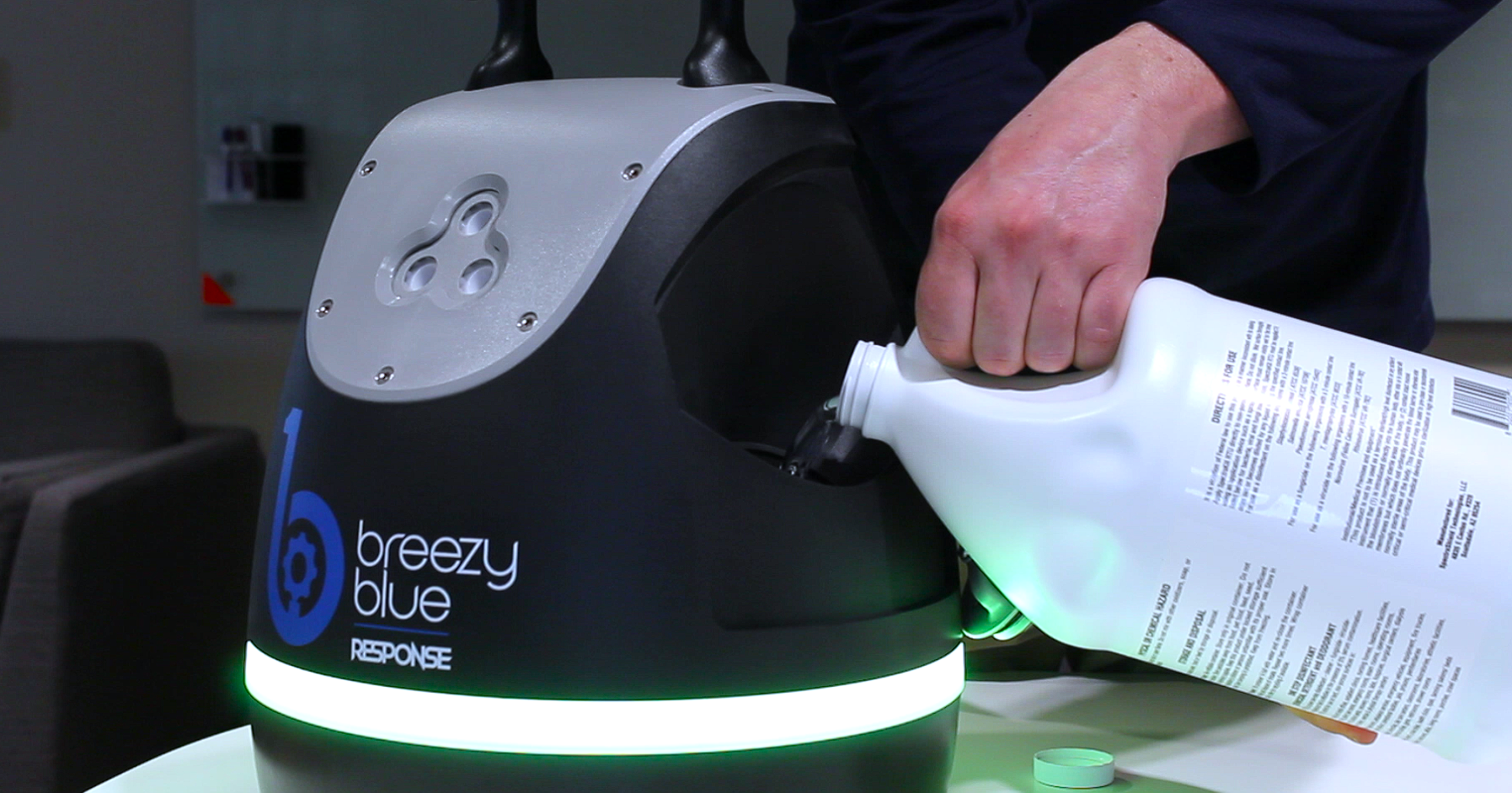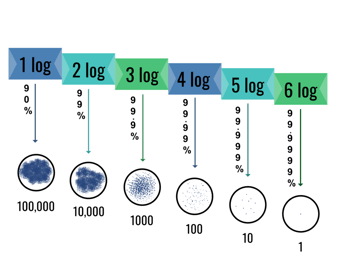
Breezy BioCare RTU: Why Real-World Efficacy Testing is Needed
The Challenges of Disinfection Protocols and Real-World Conditions
Most facility managers and custodial workers want to keep their spaces germ-free and healthy. Unfortunately, this is harder to accomplish than you might expect. Disinfectant products have established protocols that must be followed to ensure successful disinfection. Often, improperly followed protocols or human error results in less than optimum results.
For example, the Association of Official Analytical Chemists (AOAC) Germicidal Spray Test methods that are commonly used for EPA registrations involve spraying a disinfectant on a test sample until thoroughly wet and leaving that sample exposed for the required contact time. Rarely do janitorial staff have the time to saturate a surface and leave the disinfectant to sit for up to ten minutes of contact time. Also, this is a controlled test with few real-world environmental variables.
Aerosolized fog is an efficient method to dispense disinfectant within a typical room-sized space. And some aerosolized disinfectants can be applied in a dry fog that does not require saturation of the surfaces where pathogens reside. For these dry fog solutions, dosages and contact times will not match the AOAC spray test data and should be measured in true fogging tests. Also, real-world conditions such as room shape, air flow, surface types, density of surfaces, soil load, humidity, and temperature can also affect disinfection efficacy when fogging a disinfectant. And what about reentry time after fogging? (Note: spraying also creates aerosolized chemicals that might be inhaled by workers or visitors.)
BWR's Innovative Solutions for Effective Disinfection
At Build With Robots (BWR), we strive to ensure that our automated disinfection solutions are easily understood and operated properly. We perform thorough scientific studies on efficacy in real-world conditions and use that test data to inform our procedures and our end users. So, what are BWR’s solutions?
First and foremost, we use Aerosolized Hydrogen Peroxide (aHP) because our studies have shown aHP to offer the best combination of efficacy, safety, and sustainability. Our hydrogen peroxide-based disinfectant, Breezy BioCare RTU™, consists of 5.35% hydrogen peroxide and 0.12% quaternary ammonium compound (quat). Research indicates that these two chemicals offer complementary modes of action for pathogen reduction: oxidation to attack essential cell components by the hydrogen peroxide and disruption of cell membranes by the quat. Breezy BioCare RTU is Green Clean Certified, EPA-approved, and when fogged according to our guidelines, removes over 99.9% of common pathogens. For applications that need zero residue and faster reentry times, look for our soon-to-be-released Breezy BioPure RTU™ which consists solely of 7% hydrogen peroxide and water.
Second, BWR offers simple-to-use, maintenance-free, and cost-effective equipment to deliver aerosolized hydrogen peroxide. The Breezy Blue™ smart disinfection fogger can be used to rapidly disinfect rooms, while minimizing labor and chemical exposure for custodians. Breezy Blue is a highly efficient dry fogger that is safe for use on a variety of surfaces, including floors, walls, and electronics. After the fog settles, the aHP disinfectant leaves virtually no residue and no odor (in fact, it removes organic odors). Breezy Blue is a smart device that offers manual, remote, or scheduled operation to fit a variety of applications.
Finally, the third component of BWR’s solution includes soon-to-be-released Breezy Sense™ smart sensors and Breezy Cloud™ data platform for electronic record keeping. These devices offer a real-time view and a historical log of a facility’s health through monitoring such things as occupancy, air quality, environmental conditions, and of course, the disinfection history.
Continue reading Part 2 to learn more about various methods used to test disinfectants for efficacy in real-world settings.
Part 1: Breezy BioCare RTU: Why Real-World Efficacy Testing is Needed
Part 2: Five Methods of Testing Disinfection Efficacy in the Real World
Part 3: Testing Aerosolized Hydrogen Peroxide Disinfection Efficacy in Real World Conditions
Subscribe to Our Newsletter for More




